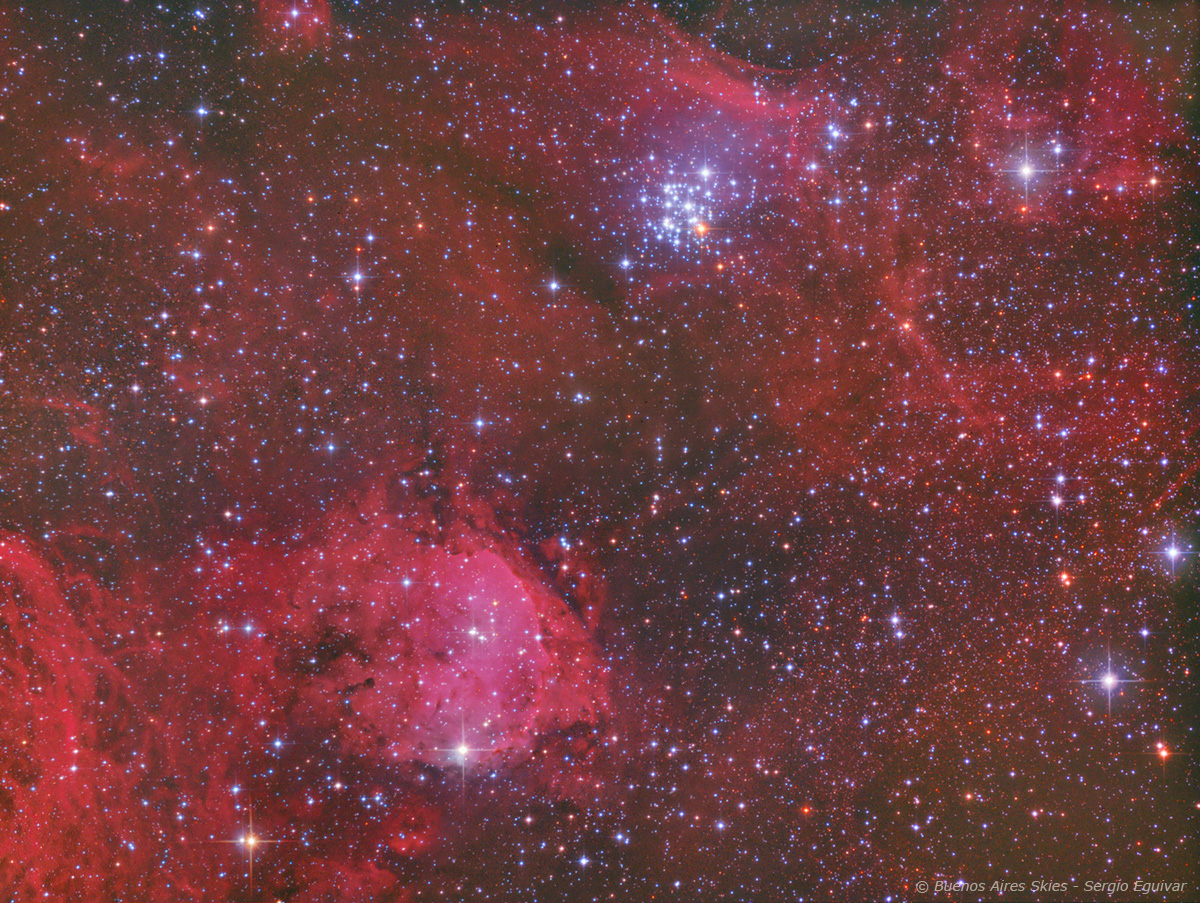
| HOME |
NGC 3293 & NGC 3324
BRIGHT EMISSION AND REFLEXION NEBULA COMPLEX IN CARINA
(Image centered at: ra 10:37 / dec - 58:24)
CLICK THE IMAGE FOR A LARGE VIEW
February 2021, Brisas Serranas Tandil, Buenos Aires, Argentina
DATA
TYPE: Open Cluster & Bright Emission & Refection Nebula
VISUAL BRIGHTNESS NGC 3293 4,7
VISUAL BRIGHTNESS NGC 3324: 6,7
IMAGE FOV: 1 degree
DISTANCE: 8000 and 7500 light years respectively
IMAGE INFORMATION
SCOPE: 6" ORION OPTICS UK (Ultra Grade Optics) w/Televue Paracorr working at at f5,75
CAMERA: QSI 583 WS
MOUNT: SKY WATCHER NEQ6
FILTERS: Baader LRGB Set; Ha Astronomik 6nm
SKY CONDITIONS: Semi - urban Skies
EXPOSURES: LHaRGB (80,40,40,40,40); (HaRGB binned 2x2)
OBJECT DESCRIPTION AND IMAGE SESSION
NGC 3293 is an open cluster 2 degrees to the north from the Keyhole Nebula in the constellation of Carina. It was discovered by French Astronomer Nicolas Louis Lacaille in 1751. The cluster consists of more than 100 stars brighter than 14th magnitude in a 10 arc minute field, the brightest of which are blue supergiants of apparent magnitude 6.5 and 6.7. There is also a 7th magnitude pulsating red supergiant V361 Carinae which is visible in the image. NGC 3293 is also known as the "Gem Cluster" because the appearance of its attractive components.
NGC 3324 is an open cluster associated with nebulosity located northwest of the Carina Nebula at a distance of 7,560 light years from Earth. It is closely associated with the emission nebula IC 2599, also known as Gum 31.The two are often confused as a single object, and together have been nicknamed the "Gabriela Mistral Nebula" due to its resemblance to the Chilean poet. NGC 3324 was first catalogued by Scottish James Dunlop in 1826.
Just want to have both objects in the same field of view.